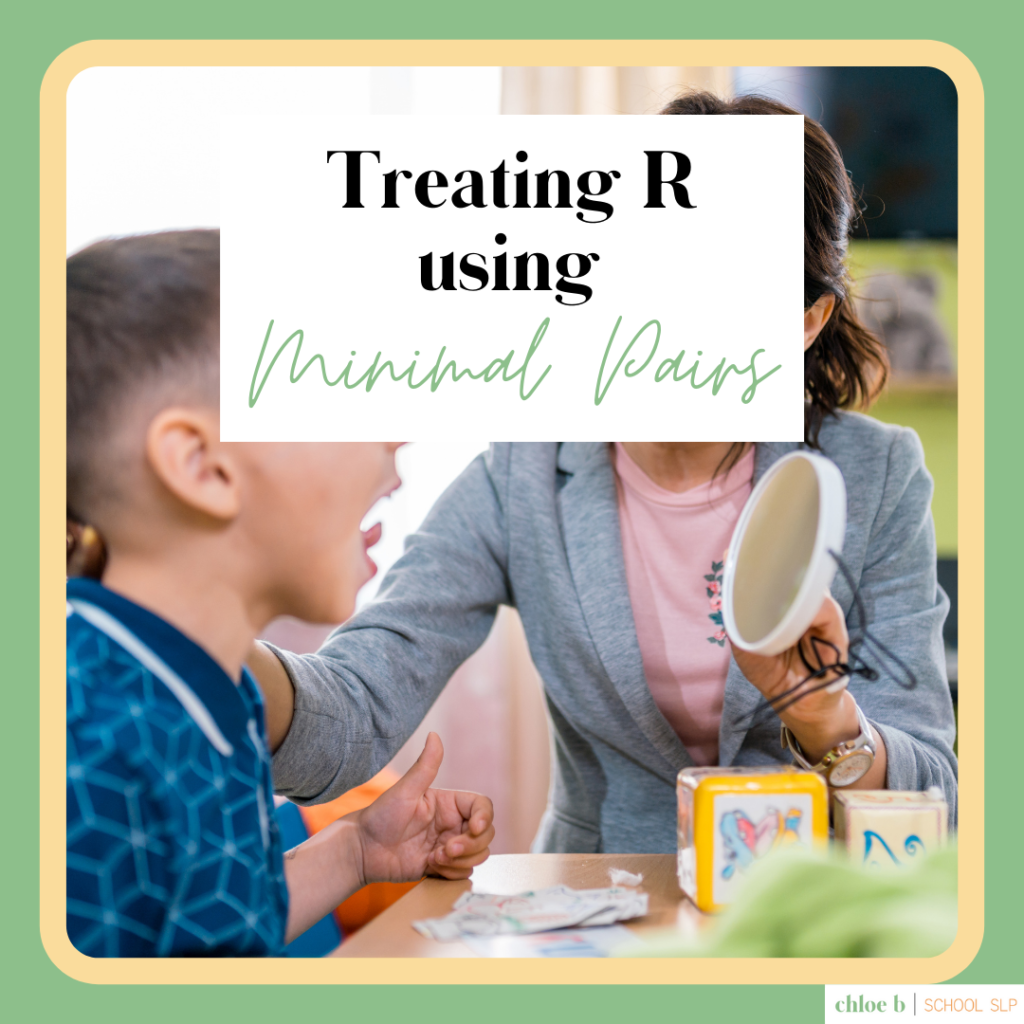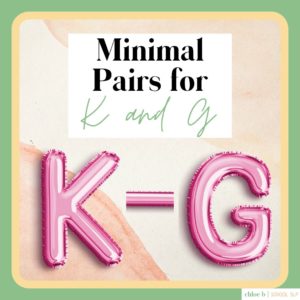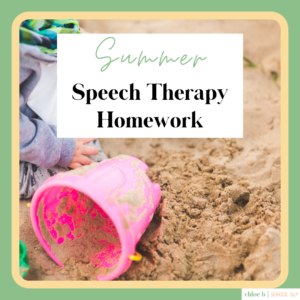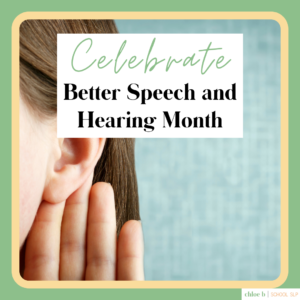Are you having difficulty treating the R sound with a traditional articulation approach? If the child continuously makes the /W/ sound instead of the /R/, then I have an approach for you! Try the minimal pairs W and R approach!
What are Minimal Pairs?
If you aren’t familiar with the minimal pairs approach, don’t worry! It’s an easy one!
Minimal pairs are words that are *minimally* different. You consider elements such as place (where your articulators are located for a sound), manner (how the articulators move/interact for the sound) and voice (whether or not the vocal folds vibrate).
The words often rhyme (like: wait/rate) even if they aren’t spelled the same.
What is the Minimal Pairs Approach?
The idea is to look at what the child is producing and what they should be producing. Often this follows a phonological pattern (formerly known as phonological processes). Examples include stopping, fronting, voicing, devoicing, backing, gliding, etc.
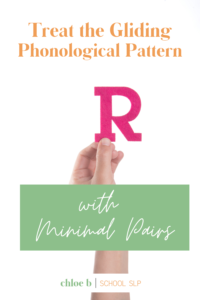
For example, say the child always produces the K sound instead of the G sound. The child calls a bug “buck” instead. This would be a perfect time to use the minimal pairs approach for K and G! You want to show the child that there is a difference between the K sound and the G sound – your voice is either ‘on’ or ‘off! This devoicing error can be taught comprehensively using my K/G boom card deck from Boom Learning!
Unfortunately, speech therapy isn’t as easy as telling a kid “hey you should be using the R sound at the beginning of R sound words, not the W sound.” I wish it was!
In reality, you need a comprehensive method to TEACH the concept and PRACTICE the concept a ton. That’s why all of my minimal pair decks include the following elements:
- Teaching Card with visuals
- Auditory Discrimination practice (make sure they can hear the difference! Many kids need help with this in order to self-monitor!)
- Production practice with feedback (they need to practice the different words to hear/feel themselves and the difference.)
- Auditory Bombardment to prime them before starting (key component to the cycles approach as well!) and when ending the session!
All of these are important ways to really re-train the child’s phonological system and therefore make BIG changes in a smaller amount of time! Yay minimal pairs approach!
Now let’s talk about minimal pairs W and R specifically….
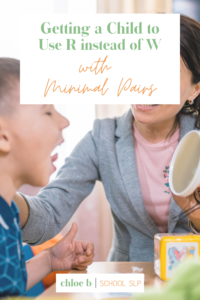
Minimal Pairs W and R Words
So is the child saying ‘wabbit’ instead of ‘rabbit? Treating the /R/ sound can be a very difficult and time consuming process. It’s one of the hardest sounds to treat because it’s so complex! A skilled speech-language pathologist will utilize a variety of methods to elicit the sound correctly. But sometimes kids need specific help eliminating the gliding phonological pattern of switching the R sound for a W sound at the beginning of words.
Here are some images that show you a sneak peek into the resource I use when working on minimal pairs w and r. Click here to see it in my Teachers Pay Teachers store and click here to see it in my Boom Learning store.
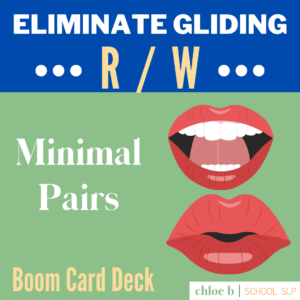
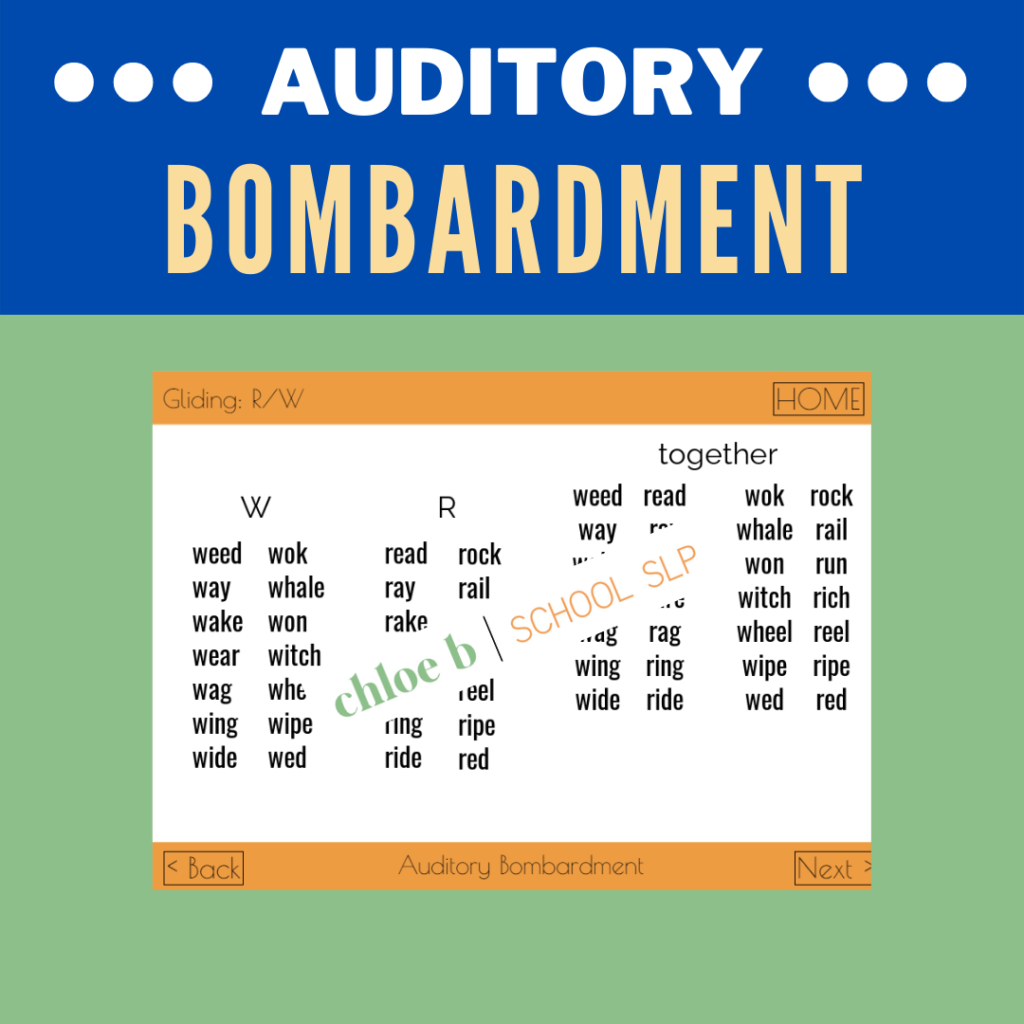
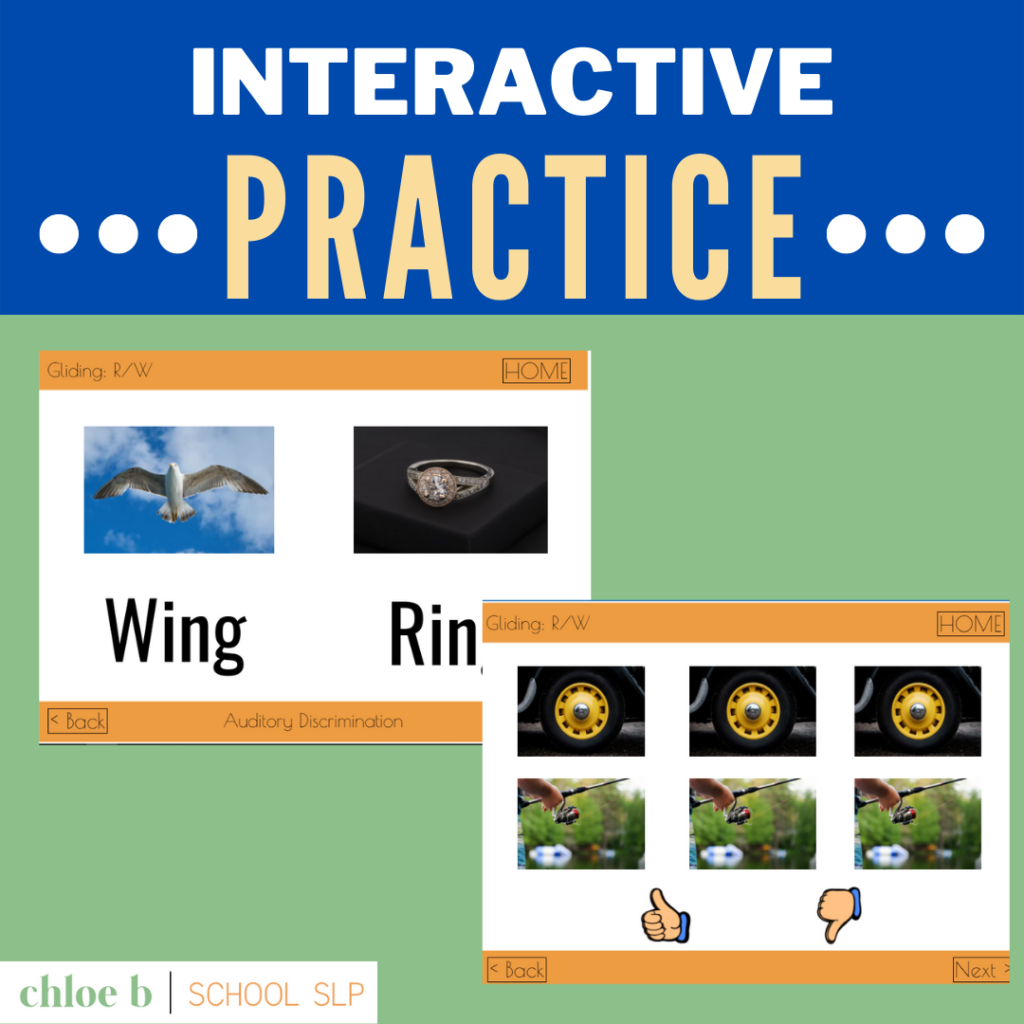
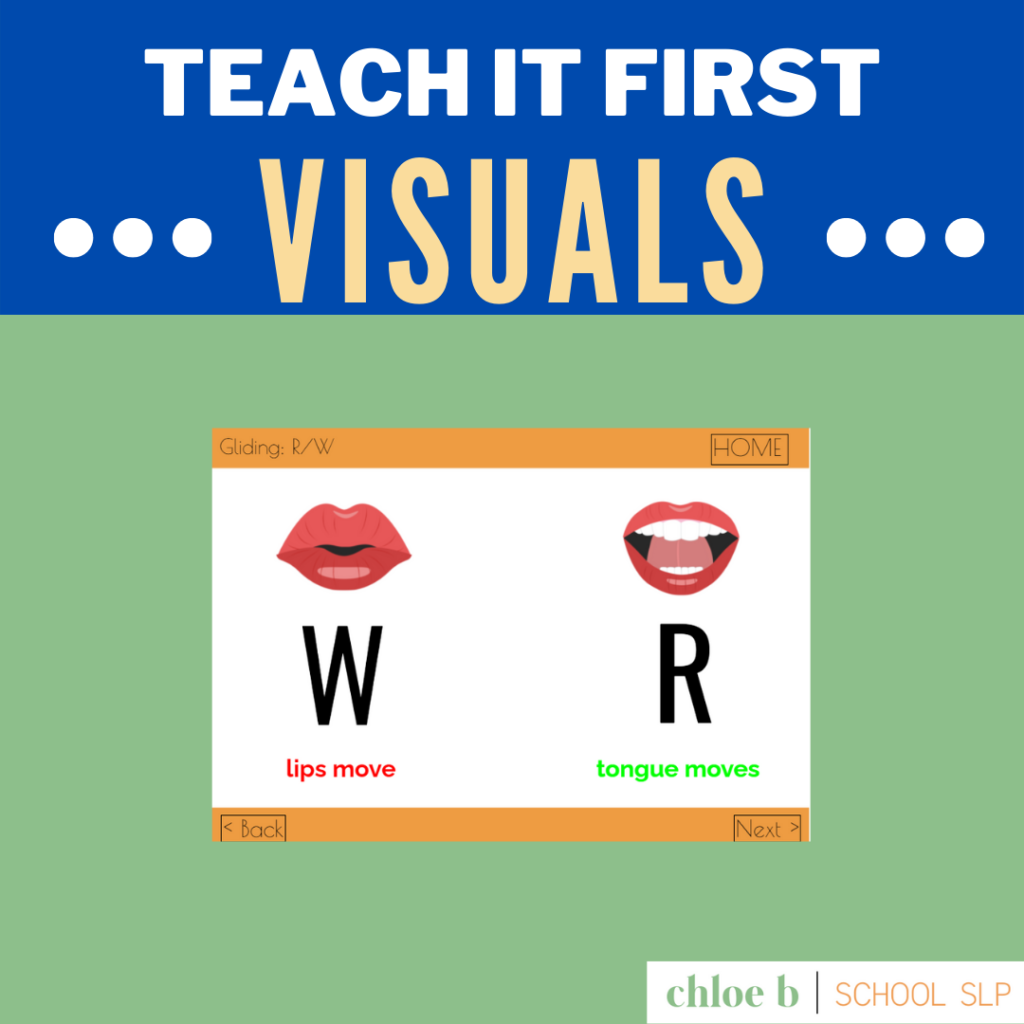
If you’re looking for a list of R and W minimal pair words, then I hope this helpful!
- Weed/Read
- Wok/Rock
- Wake/Rake
- Way/Ray
- Wear/Rare
- Wag/Rag
- Wing/Ring
- Wed/Red
- Wide/Ride
- Whale/Rail
- Won/Run
- Witch/Rich
- Wheel/Reel
- Wipe/Ripe
I hope this was helpful! I love this approach and think you will too! Let me know if you have any questions or need any more info! You can comment below, email me, or my DMs are always open on social media! @chloebschoolslp
-Chloe B | School SLP

